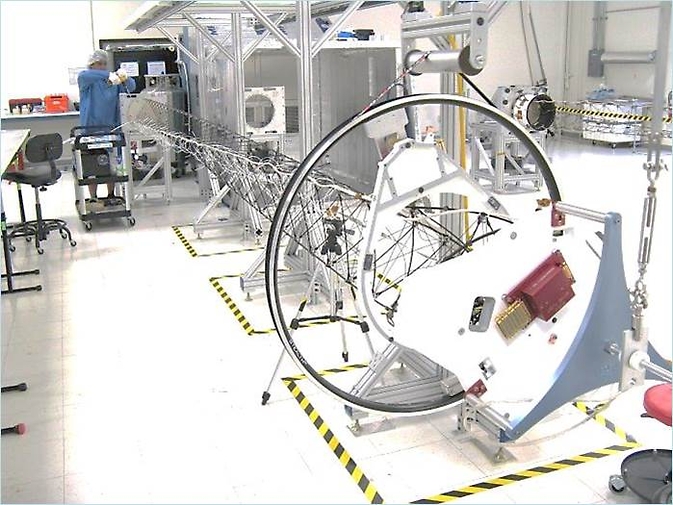NOAA’s GOES-R Satellite Magnetometer Ready for Spacecraft Integration

This image captures the first functional deployment of the Magnetometer boom. Image Credit: ATK/Goleta
The Magnetometer will monitor magnetic field variations around the Earth and enable forecasters at NOAA's Space Weather Prediction Center to better predict the consequences of geomagnetic storms. These storms pose a threat to orbiting spacecraft and human spaceflight.
In addition, the measurements taken by the Magnetometer will aid in providing alerts and warnings to power companies and satellite operators due to the potential damage a change in magnetic flux can have on electric power grids and satellite systems.
“This milestone is another example of our continuing progress to develop, build and launch GOES-R,” said Greg Mandt, NOAA system program director for the GOES-R Series Program at NASA's Goddard Space Flight Center in Greenbelt, Maryland.
The Magnetometer instrument hosts a boom that, once in space, will extend 26 feet away from the satellite. This allows the sensor to be much more perceptive of the space magnetic environment, resulting in even better forecasting of space weather. The magnetometer sensors and electronics elements were built by Macintyre Electronic Design Associates, Inc. (MEDA) in Sterling, Virginia and the boom element of the instrument was built by ATK in Goleta, California.
The electronics units were installed on the spacecraft panels and the sensors and the boom will be integrated onto the satellite in the fall. The Magnetometer is the fifth of six total instruments to be completed for the GOES-R satellite.
The advanced spacecraft and instrument technology on the GOES-R, or Geostationary Operational Environmental Satellite – R, series will result in more timely and accurate weather forecasts. It will improve support for the detection and observations of meteorological phenomena and directly affect public safety, protection of property and, ultimately, economic health and development.
The GOES-R series will be more advanced than the current GOES fleet. The satellites are expected to more than double the clarity of today's GOES imagery and provide more atmospheric observations than current capabilities with more frequent images.
NOAA manages the GOES-R Series Program through an integrated NOAA-NASA program office, located at NASA's Goddard Space Flight Center in Greenbelt, Md.
NOAA's mission is to understand and predict changes in Earth's environment, from the depths of the ocean to the surface of the sun, and to conserve and manage our coastal and marine resources.
Want to learn more about how space weather impacts life on Earth?
Visit NOAA Satellites on YouTube at: https://www.youtube.com/watch?v=hPiy4x5z0GI.
For more information about GOES-R, visit:
www.goes-r.gov or
http://www.nasa.gov/content/goes-r/
NOAA/ Rob Gutro
NASA's Goddard Space Flight Center, Greenbelt, Md.
Media Contact
All latest news from the category: Physics and Astronomy
This area deals with the fundamental laws and building blocks of nature and how they interact, the properties and the behavior of matter, and research into space and time and their structures.
innovations-report provides in-depth reports and articles on subjects such as astrophysics, laser technologies, nuclear, quantum, particle and solid-state physics, nanotechnologies, planetary research and findings (Mars, Venus) and developments related to the Hubble Telescope.
Newest articles

High-energy-density aqueous battery based on halogen multi-electron transfer
Traditional non-aqueous lithium-ion batteries have a high energy density, but their safety is compromised due to the flammable organic electrolytes they utilize. Aqueous batteries use water as the solvent for…

First-ever combined heart pump and pig kidney transplant
…gives new hope to patient with terminal illness. Surgeons at NYU Langone Health performed the first-ever combined mechanical heart pump and gene-edited pig kidney transplant surgery in a 54-year-old woman…

Biophysics: Testing how well biomarkers work
LMU researchers have developed a method to determine how reliably target proteins can be labeled using super-resolution fluorescence microscopy. Modern microscopy techniques make it possible to examine the inner workings…





















